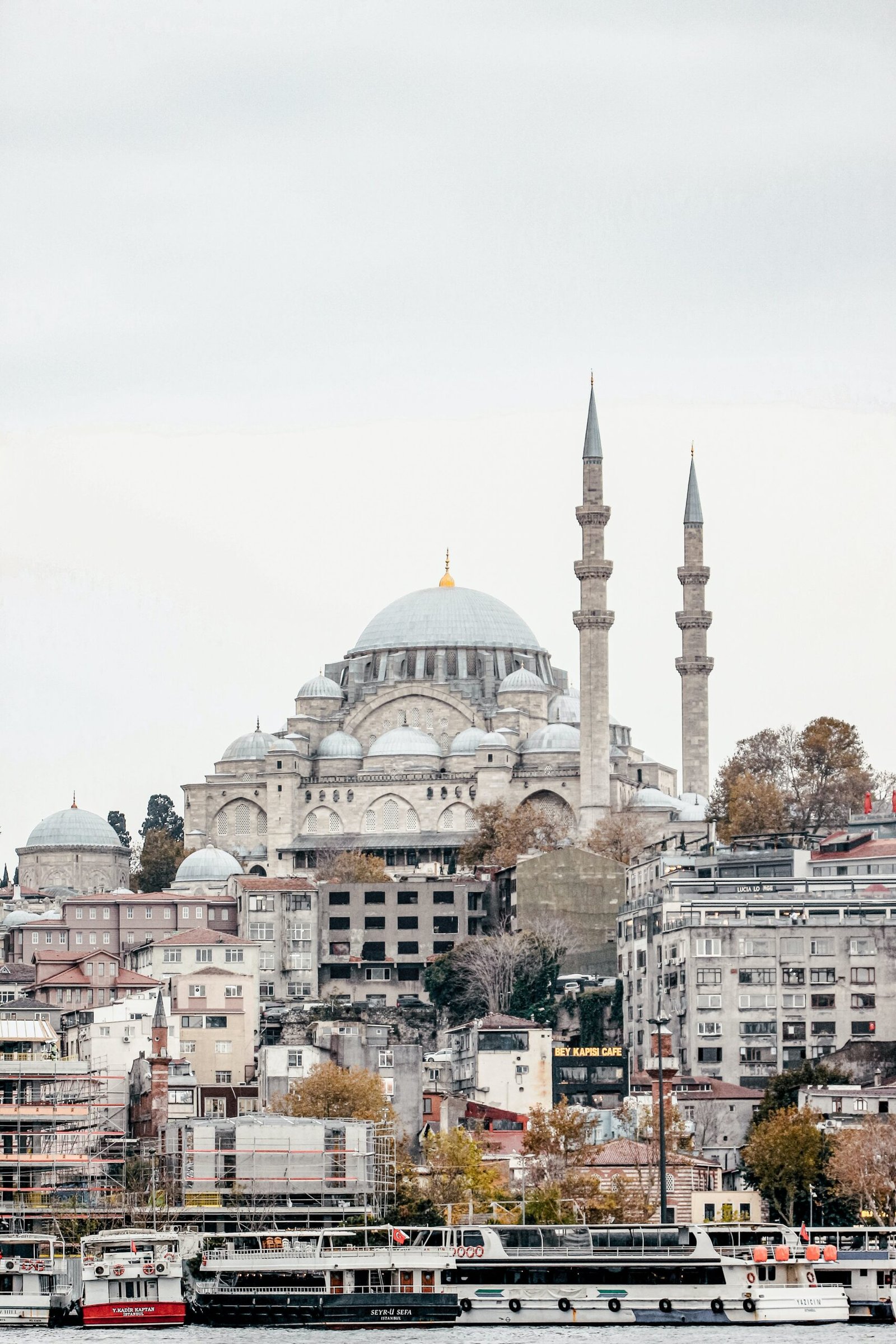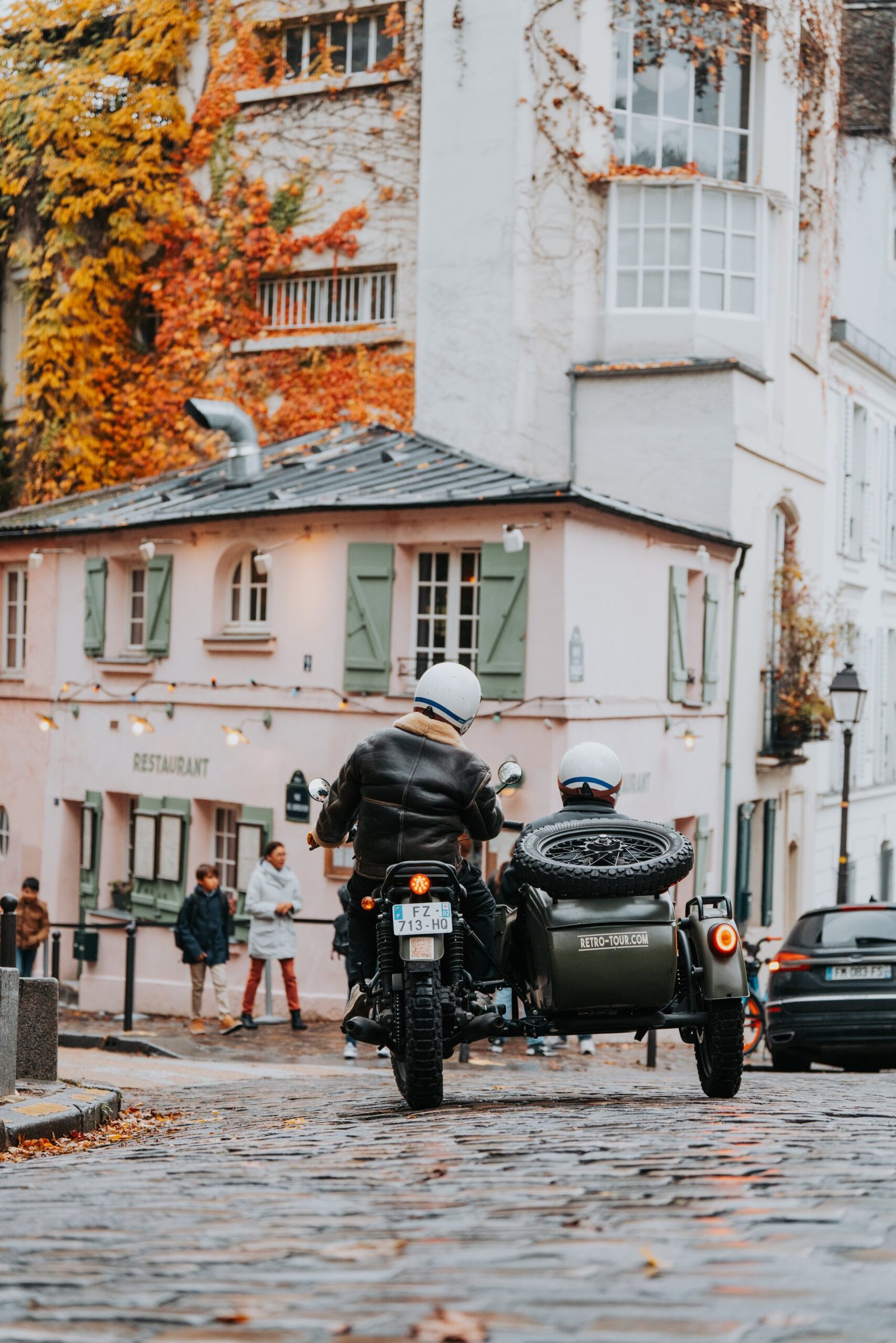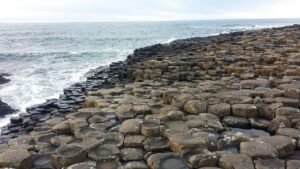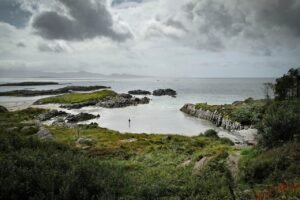
Are you ready to embark on a captivating journey through the enchanting land of Ireland? This article takes you on a delightful exploration of Ireland, where culture and history merge to create an unforgettable adventure. Prepare to immerse yourself in the vibrant traditions, charming landscapes, and rich heritage that this magnificent country has to offer. As we delve into the depths of Ireland’s allure, you’ll discover a treasure trove of ancient castles, breathtaking scenic vistas, and warm-hearted locals eager to share their captivating stories. From the bustling streets of Dublin to the mystical landscapes of the Wild Atlantic Way, get ready to experience the magic of Ireland firsthand.

The History of Ireland
Ireland has a rich and fascinating history that spans thousands of years, with influences from various cultures and civilizations. From prehistoric times to the present day, the story of Ireland is shaped by its people, their struggles, and their triumphs.
Prehistoric Ireland
The earliest evidence of human inhabitation in Ireland dates back to approximately 10,000 BCE, during the Mesolithic era. Stone tools and remains of settlements found throughout the country provide insight into the lives of Ireland’s earliest inhabitants. As time progressed, the people of Ireland transitioned from a hunter-gatherer society to an agrarian one, with the development of farming techniques and the introduction of domesticated animals.
Celtic Era
One of the most significant periods in Ireland’s history is the Celtic era, which began around 500 BCE. The Celts, a group of Indo-European tribes, migrated to Ireland and brought with them their language, customs, and religious beliefs. The Celtic culture deeply influenced Ireland, leaving its mark on the language, art, and mythology of the island. It was during this time that the Celtic chieftains and druids became the prominent figures of society.
Medieval Period
The medieval period in Ireland was marked by political turbulence and the influence of Christianity. The arrival of St. Patrick, the patron saint of Ireland, in the 5th century, ushered in the spread of Christianity and laid the foundation for the Irish monastic tradition. During the early medieval period, Ireland was divided into several kingdoms and witnessed the rise and fall of various dynasties. The arrival of the Normans in the 12th century further complicated the political landscape of Ireland.
Colonialism and Independence
Ireland’s history took a dramatic turn during the era of colonialism. In the 16th century, Ireland became the target of English colonization efforts, leading to centuries of British rule. The English sought to impose their political and religious control over the Irish, resulting in widespread oppression and the suppression of Irish culture and language. The late 19th and early 20th centuries saw a resurgence of Irish nationalism, culminating in the Irish War of Independence and the establishment of the Irish Free State in 1922.
Important Historical Sites
Ireland is dotted with numerous historical sites that offer a glimpse into its past. These sites hold immense significance in terms of history, archaeology, and cultural heritage.
Newgrange
One of the most famous prehistoric sites in Ireland is Newgrange, located in County Meath. This Neolithic monument is a UNESCO World Heritage site and predates both Stonehenge and the Egyptian pyramids. Built around 3200 BCE, Newgrange is a passage tomb that consists of a large mound with a burial chamber at its center. The site is known for its remarkable architecture and its alignment with the winter solstice, which creates an awe-inspiring phenomenon where the chamber is illuminated by sunlight at dawn.
Rock of Cashel
The Rock of Cashel, situated in County Tipperary, is a medieval site that features a collection of ancient buildings atop a limestone outcrop. It was once the seat of the kings of Munster and later became an important religious center. The rock’s iconic silhouette, with its medieval towers and cathedral ruins, looms over the surrounding countryside and is a testament to Ireland’s medieval history and architectural prowess.
Glendalough
Nested in the picturesque Wicklow Mountains, Glendalough is a monastic site that represents Ireland’s early Christian period. Founded in the 6th century by St. Kevin, this tranquil valley is home to the ruins of a monastic settlement, including a tower, churches, and a graveyard. The site’s natural beauty, with its scenic lakes and forested hills, adds to its allure.
Giant’s Causeway
Located in County Antrim, the Giant’s Causeway is a natural wonder steeped in legend and folklore. This UNESCO World Heritage site is a vast area of interlocking basalt columns, formed as a result of volcanic activity around 60 million years ago. According to mythology, the causeway was built by the giant Finn McCool, connecting Ireland to Scotland. The unique geological formations and stunning coastal scenery make it one of the most captivating spots in Ireland.

Irish Folklore and Mythology
Ireland’s folklore and mythology form an integral part of its cultural identity. Passed down through generations, these tales are an enchanting blend of history and imagination, reflecting the beliefs and values of the Irish people.
The Tuatha Dé Danann
The Tuatha Dé Danann, or the “People of the Goddess Danu,” are a mythical race believed to have inhabited Ireland before the arrival of the Celts. According to lore, they possessed supernatural powers and were skilled in magic and warfare. The stories of the Tuatha Dé Danann are filled with fascinating characters and epic battles, and their influence can still be seen in contemporary Irish mythology.
Cuchulainn and the Ulster Cycle
Cuchulainn is one of the most iconic figures from Irish mythology. As a hero of the Ulster Cycle, he is renowned for his exceptional strength and bravery. The tales surrounding Cuchulainn depict his incredible feats as he battles against enemies and defends his people. These stories are an integral part of Ireland’s cultural heritage and serve as a symbol of courage and resilience.
The Children of Lir
The story of the Children of Lir is a tragic and poignant tale from Irish mythology. It tells the story of four siblings who were transformed into swans by their stepmother’s curse and forced to wander across the waters of Ireland for centuries. This tale captures the themes of loss, endurance, and the power of love, and serves as a reminder of the enduring nature of Irish storytelling.
The Banshee
The Banshee is a mythical creature known as the harbinger of death in Irish folklore. According to legend, she appears as a wailing spirit, foretelling the impending demise of someone in a family. The Banshee is deeply ingrained in Irish culture and has been featured in countless stories, poems, and songs throughout the centuries.
Traditional Irish Music
One of Ireland’s most vibrant and cherished cultural expressions is its traditional music. With its toe-tapping rhythms and haunting melodies, traditional Irish music has captivated audiences around the world.
The Origins of Irish Music
The origins of traditional Irish music can be traced back to the ancient Celtic era. Archaeological evidence suggests that musical instruments such as the harp and the bodhrán (a traditional Irish drum) were used in Ireland as early as the Bronze Age. Over the centuries, the music evolved and incorporated influences from various cultures, including Gaelic, Norse, and English.
Instruments in Irish Music
Traditional Irish music is characterized by its distinctive instruments. The harp, often seen as a symbol of Ireland, is a significant part of Irish musical heritage. Other instruments commonly used in Irish music include the fiddle, tin whistle, concertina, uilleann pipes, and bodhrán. Each instrument contributes to the unique sound and rhythm of traditional Irish music.
Styles of Irish Music
Irish music encompasses a variety of styles, each with its own regional and historical significance. Jigs, reels, and hornpipes are some of the well-known genres within Irish music, renowned for their lively and energetic nature. Slow airs, on the other hand, evoke a sense of melancholy and reflection. The diversity of Irish music reflects the rich tapestry of Ireland’s cultural heritage.
Famous Irish Musicians
Ireland has produced numerous talented musicians who have left an indelible mark on the world of music. From traditional groups like The Chieftains and The Dubliners to contemporary artists like Enya and U2, Irish musicians have achieved international acclaim and popularity. Their contributions have not only preserved Irish musical traditions but have also influenced and enriched the global music scene.

Irish Dance and Traditional Step Dancing
Another vibrant aspect of Irish culture is its traditional dance, with its distinctive footwork and lively rhythms. Irish dance has captivated audiences worldwide, thanks in part to its popularity and iconic performances like Riverdance.
Brief History of Irish Dance
Irish dance has a long and storied history, dating back to ancient times. It evolved from a combination of different influences, including Celtic, Norman, and English traditions. Throughout the centuries, Irish dance has undergone various transformations, adapting to changing styles and fashions, while still maintaining its unique identity.
Riverdance Phenomenon
The Riverdance phenomenon, which took the world by storm in the 1990s, brought Irish dance to a global audience. The fusion of traditional Irish music, mesmerizing choreography, and the incredible athleticism of the dancers captivated millions of people around the world. Riverdance played a significant role in popularizing Irish dance and paved the way for other Irish dance productions.
Styles of Irish Dance
Irish dance is characterized by its precise footwork, quick movements, and distinctive costumes. There are two main styles of Irish dance: step dancing and céili dancing. Step dancing focuses on intricate solo footwork, while céili dancing is a social style that is often performed in groups. Both styles are celebrated for their energy and precision, making Irish dance a captivating visual spectacle.
Irish Dancing Competitions
Irish dancing competitions, known as feiseanna, play a crucial role in the preservation and promotion of Irish dance. These competitions provide a platform for dancers of all ages and skill levels to showcase their talent and compete against their peers. Feiseanna are not only a testament to the dedication and hard work of Irish dancers but also foster a sense of community and camaraderie within the Irish dance community.
Literature and Irish Writers
Ireland has a rich literary tradition that spans centuries. From ancient legends and epic poetry to contemporary novels and plays, Irish literature has made a profound impact on the world of literature.
Early Irish Literature
Early Irish literature is renowned for its myths, legends, and sagas. The Táin Bó Cúailnge, also known as the Cattle Raid of Cooley, stands as one of the greatest epic tales in Irish mythology. The stories of Finn MacCool in the Fenian Cycle and the heroic adventures of Cuchulainn in the Ulster Cycle are also prominent examples of early Irish literature.
The Irish Literary Revival
The late 19th and early 20th centuries witnessed a resurgence of Irish literature known as the Irish Literary Revival. During this period, writers and poets sought to reclaim and revive Irish cultural identity, often through the use of the Irish language. Figures such as Lady Gregory, W.B. Yeats, and J.M. Synge played pivotal roles in the revival, establishing the Abbey Theatre and producing works that celebrated Irish history, folklore, and language.
Famous Irish Writers
Ireland is home to many renowned writers who have made significant contributions to world literature. From Jonathan Swift’s biting satire in “Gulliver’s Travels” to James Joyce’s modernist masterpiece “Ulysses,” Irish writers have explored a wide range of themes and genres. Oscar Wilde, Bram Stoker, Samuel Beckett, and Seamus Heaney are just a few more examples of the wealth of literary talent that hails from Ireland.
W.B. Yeats and His Nobel Prize
William Butler Yeats, one of Ireland’s most celebrated poets, was awarded the Nobel Prize in Literature in 1923. Yeats is known for his evocative poetry, rich in symbolism and mythology. His works, such as “The Second Coming” and “Easter, 1916,” reflect the tumultuous political and cultural landscape of Ireland during his time. Yeats’ Nobel Prize win brought international recognition to Irish literature and solidified his place as one of Ireland’s literary giants.
Irish Language and Gaeltacht Areas
The Irish language, or Gaeilge, is an integral part of Irish culture and plays a significant role in the country’s identity. Although English is the primary language spoken in Ireland today, efforts have been made to preserve and revive the use of the Irish language.
Introduction to the Irish Language
The Irish language is a Celtic language that has been spoken in Ireland for thousands of years. It is one of the oldest written languages in Europe and has a rich literary tradition. The Irish language uses a unique alphabet known as the Irish or Gaelic script, which consists of 18 letters. While the majority of Irish people today speak English, the Irish language is still taught in schools and holds a special place in Irish culture.
Gaeltacht Areas in Ireland
Gaeltacht areas are regions in Ireland where the Irish language is spoken as a community language. These areas, located primarily in the western and southern parts of the country, are known for their vibrant Irish-speaking communities and cultural traditions. People visit Gaeltacht areas to immerse themselves in the language, experience traditional Irish music and dance, and gain a deeper understanding of Irish culture.
Efforts to Revive Irish Language
In recent decades, there has been a renewed interest in promoting and preserving the Irish language. Various initiatives have been implemented to increase fluency and usage of Irish, particularly among young people. Bilingual signage, Irish-language schools, and language immersion programs have helped to revive the language and ensure its survival for future generations.
Bilingualism and Language Education
Bilingualism is common in Ireland, with many people being fluent in both Irish and English. The Irish government has made efforts to promote bilingualism and language education, recognizing the importance of preserving the Irish language while also acknowledging the dominance of English. Language education policies aim to provide opportunities for individuals to learn and use Irish, fostering a bilingual society that embraces both languages.
Religion in Ireland
Religion has played a significant role in shaping the social, cultural, and political landscape of Ireland. The country has a complex religious history, with two major denominations, Catholicism and Protestantism, exerting considerable influence.
Catholicism in Ireland
Catholicism has historically been the dominant religion in Ireland, with a strong presence dating back to early Christian times. The Catholic Church played an influential role in Irish society, providing education, healthcare, and social services. Religious devotion and rituals were an integral part of Irish culture, with Catholicism deeply embedded in the collective identity of the Irish people.
Protestantism in Ireland
Protestantism, particularly the various denominations of the Church of Ireland, gained prominence during the English Reformation. The arrival of the Protestant English settlers in the 16th and 17th centuries led to a division between Catholics and Protestants in Ireland. Over time, Protestantism became associated with British rule and the Protestant Ascendancy, leading to tensions and conflicts between the two religious communities.
Religious Tensions and Conflicts
Throughout Ireland’s history, religious tensions and conflicts have been a source of division and strife. The sectarian divide between Catholics and Protestants has at times fueled violence and political unrest, culminating in periods of intense conflict like the Troubles in Northern Ireland. Today, efforts are being made to promote dialogue, understanding, and reconciliation between different religious communities in Ireland.
Changing Religious Landscape
In recent years, Ireland has experienced significant changes in its religious landscape. The influence of the Catholic Church has waned, as increasing numbers of people identify as non-religious or belonging to other faiths. The legalization of same-sex marriage and the repeal of the constitutional ban on abortion reflect a more secular and liberalizing society. These shifts are indicative of Ireland’s evolving attitudes towards religion and its ongoing journey towards a more diverse and inclusive society.
Gaels, Vikings, and Norman Invasions
Ireland’s history is intertwined with the arrival of various groups and the subsequent blending of cultures. The Gaels, Vikings, and Normans all had a profound impact on Ireland’s social, political, and cultural development.
The Arrival of the Gaels
The Gaels, an Celtic ethnic group, are considered the indigenous people of Ireland. They are believed to have migrated to the island during the Bronze Age and established various kingdoms throughout the country. The Gaelic language and cultural traditions became dominant and shaped Ireland’s early identity.
Viking Invasions and Settlements
The Vikings, known for their seafaring skills and trading networks, arrived in Ireland during the 8th century. Their raids on Irish monasteries and settlements created a period of instability and conflict. However, over time, the Vikings established settlements in Ireland, such as Dublin and Waterford, and assimilated into Irish society, contributing to its cultural diversity.
The Norman Conquest of Ireland
The Norman invasion of Ireland in the 12th century marked a significant turning point in Irish history. Led by King Henry II of England, the Normans sought to bring Ireland under English control. The Norman conquest resulted in the establishment of a feudal system in Ireland, with Normans becoming the ruling class. This period saw the construction of imposing castles and the introduction of English law and customs.
Influence of Viking and Norman Culture
The Viking and Norman invasions had a lasting impact on Ireland, influencing its political, social, and architectural landscape. The Vikings brought new trade routes and improved agricultural techniques, while the Normans introduced feudalism and centralized governance. Both groups left their mark on Ireland’s cities, cemeteries, and place names, shaping the cultural fabric of the country.
Modern Irish Culture
Modern Irish culture is a vibrant tapestry of traditions, arts, and customs that reflect the country’s rich heritage. From cultural festivals and cuisine to sports and contemporary arts, Ireland’s cultural landscape is continually evolving.
Cultural Festivals and Celebrations
Ireland is known for its lively and vibrant festivals, which celebrate a range of cultural events and traditions. The St. Patrick’s Day parade in Dublin is one of the most famous and colorful festivals, attracting visitors from around the world. Other notable festivals include the Galway International Arts Festival, the Rose of Tralee, and the Puck Fair. These festivals showcase Ireland’s artistic talent, culinary delights, and love for traditional music and dance.
Traditional Irish Cuisine
Traditional Irish cuisine is hearty and comforting, reflecting the country’s agricultural heritage and culinary traditions. Irish stew, made with lamb or beef, potatoes, and root vegetables, is a classic example of Irish comfort food. Other dishes, such as colcannon (mashed potatoes with cabbage or kale) and soda bread, are staples of Irish cuisine. In recent years, there has been a renewed interest in Ireland’s culinary identity, with a focus on using locally sourced ingredients and modern culinary techniques.
Sports and Recreation
Sports play a central role in Irish culture, with Gaelic games being particularly popular. The Gaelic Athletic Association (GAA) oversees sports like Gaelic football and hurling, which are deeply rooted in Irish history and culture. Soccer, rugby, and golf are also widely enjoyed in Ireland. The passion for sports is evident in the fervent support shown by fans at matches and the pride the Irish people take in their sporting achievements.
Contemporary Arts and Literature
Ireland has a thriving contemporary arts scene that encompasses various forms of expression. From visual arts and theater to literature and film, Irish artists continue to make their mark on the global stage. Irish writers, such as Colm Tóibín and Eimear McBride, have achieved critical acclaim, and Irish films, like “The Commitments” and “Once,” have gained international recognition. Contemporary Irish arts reflect the country’s multifaceted identity and its ability to reinterpret and innovate its cultural traditions.
In conclusion, exploring the history and culture of Ireland is a journey of discovery filled with countless stories, legends, and traditions. From its prehistoric origins to its vibrant contemporary arts scene, Ireland’s unique heritage continues to captivate and inspire people from around the world. Whether delving into the ancient past, immersing oneself in the beauty of historical sites, or enjoying the lively music and dance, Ireland offers a rich tapestry of experiences that invites you to connect with its captivating history and embrace its welcoming culture.





